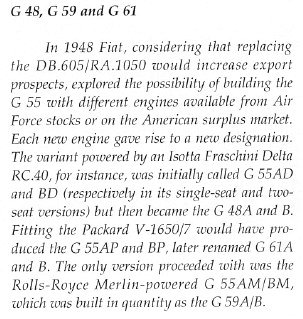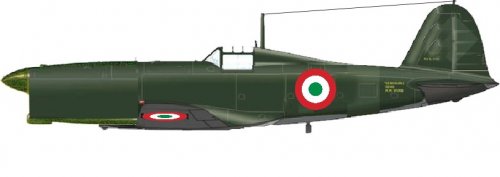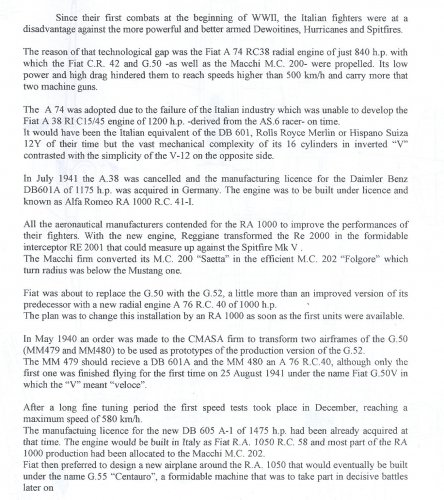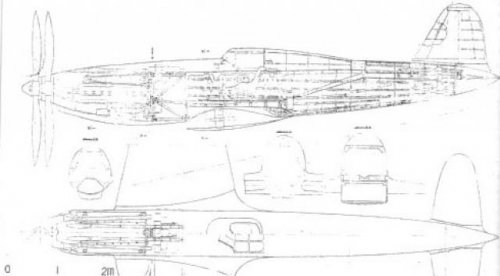In an old issue of "Aerei" dated circa 1976, in an article written by C. D'Agostino and dealing with Fiat G.59, I read a quite strange (at least for me) statement.
According to Mr. D'Agostino, in the process that brought Fiat to evolve the G.55 (with Daimler-Benz under licence) to the G.59 (with Packard RR Merlin), Fiat technicians tried to install at first an Isotta Fraschini Delta in a G.55 (or in the sole G.56 prototype) airframe.
But the performances with IF Delta were quite disappointing, so the G.55 was then modified and tested with an RR Merlin taken from a Supermarine Spitfire IX, loaned by Aeronautica Militare Italiana to Fiat for this purpose.
The rest is well known.
In my opinion is quite dubious that Fiat ever installed an IF Delta engine in a "Centauro". At least I never saw a photograph of a G.55 modified in such way.
Are my assumptions uncorrect ? Please let me know.
According to Mr. D'Agostino, in the process that brought Fiat to evolve the G.55 (with Daimler-Benz under licence) to the G.59 (with Packard RR Merlin), Fiat technicians tried to install at first an Isotta Fraschini Delta in a G.55 (or in the sole G.56 prototype) airframe.
But the performances with IF Delta were quite disappointing, so the G.55 was then modified and tested with an RR Merlin taken from a Supermarine Spitfire IX, loaned by Aeronautica Militare Italiana to Fiat for this purpose.
The rest is well known.
In my opinion is quite dubious that Fiat ever installed an IF Delta engine in a "Centauro". At least I never saw a photograph of a G.55 modified in such way.
Are my assumptions uncorrect ? Please let me know.




